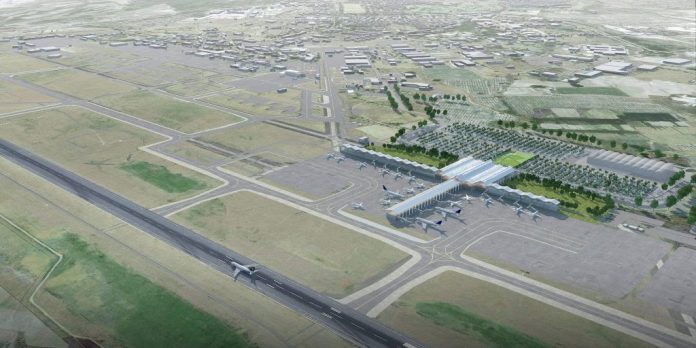CLARK International Airport (CRK) will support the development of the Pampanga Golden Triangle into the next megalopolis in Luzon, according to former President Gloria Macapagal-Arroyo.
Arroyo, who also served as congresswoman representing the Second District of Pampanga and Speaker of the House of Representatives, said the rise of CIA as an international gateway to Central and North Luzon will underpin the development of Pampanga Megalopolis.
Megalopolis refers to a cluster of municipalities and cities connected by transport infrastructures such as airports, expressways and railways.
“When completed it will become a jewel in Southeast Asia as it is dubbed the gateway to Northern Philippines,” said Arroyo, referring to Pampanga Megalopolis.
The former President, equipped with a vision for growth to transform Central Luzon into an iconic footprint for development, asked renowned urban planner Felino Palafox Jr. in 2016 to draft a development plan for Pampanga province as the epicenter of progress and development.
“As a countermeasure to decongest Metro Manila, Pampanga would be one of the most viable alternatives to develop the northern part of mainland Luzon,” said Arroyo.
She said the government’s “Build, Build, Build” program will help spark economic activities in the region.
Under the Pampanga Megalopolis 2017-2040 plan approved by the Provincial Government, the Pampanga Megalopolis will have pockets of development including an aerotropolis, an agropolis, an aquapolis and an ecopolis.
The CIA will become the center of Pampanga’s Aerotropolis composed of Angeles City, San Fernando City, Mabalacat City and Mexico. The aerotropolis will have spatial, functional and connectivity elements.
Spatial elements would include aviation-oriented businesses, hotels, convention centers, service industries and others. Residential areas would be developed within the outer ring of the aerotropolis and grow outwards.
Functional elements would involve businesses relying on the airport for access while the connectivity elements would consist of air routes and surface linkages such as highways and railways to provide internal and external accessibility to the airport.
Arroyo noted that the construction of Manila North Railway between Clark and Manila is now in full swing while the Clark to Subic railway will also be developed.
Other infrastructure projects that will support Pampanga’s Aerotropolis are a new circumferential transport corridor, interconnecting all cities and municipalities in the province; the development of a world-class mass transportation system along MacArthur Highway in the form of bus rapid transit that will integrate and synergize with CIA.
Meanwhile, Pampanga’s Agropolis clusters the various agriculture communities of the province and provides necessary urban amenities toward overall improvement of quality of life.
The agropolitan development will rely on policy and technology interventions like incentives to farmers and application of hydroponic farming techniques, farm-to-market roads and post-harvest and other support facilities. It will also involve the development of agri-tourism zones.
Among the municipalities covered by the proposed agropolis are Lubao, Guagua, Santa Rita, Bacolor, San Luis, San Simon, Apalit, Santo Tomas, Santa Ana and Magalang. Major products include rice, corn and sugarcane as well as livestock and poultry products. This will be complemented by pottery and casket-making (Santo Tomas), woodcarving and furniture making (Guagua), metal manufacture, guitar-making and garments and textiles, among others.
Pampanga’s Aquapolis or metropolitan area that thrives on water will bring together Pampanga’s geographical, historical and cultural affinity to the river, as well as its rich aquatic resources.
Pampanga’s aquatic production accounted for 60 percent of Central Luzon’s total fishery production in 2012.
The proposed aquapolis will consider the strengths and potentials of Sasmuan, Macabebe, Minalin, Lubao and Masantol.
Aquatic products include tilapia, bangus, sugpo, alimango, ulang wild hito and dalang.
Finally, Pampanga’s Ecopolis will promote the province’s rich natural attractions and eco-tourism activities such as bird watching in the wetlands of Candaba, trekking in Mt. Dorst and Mt. Arayat and community-based eco-tourism in Porac and Floridablanca.
“Having clusters dedicated to eco-tourism would help in conserving the natural environment, and at the same time generate funds for the municipalities. It helps the locals, especially the indigenous people to earn their livelihood, while giving the opportunity for the guests to learn and experience,” said Arroyo.
Arayat and Candaba form one cluster of the ecopolis in the northeast, while Porac and Floridablanca form another in the western part of Pampanga Megalopolis.




